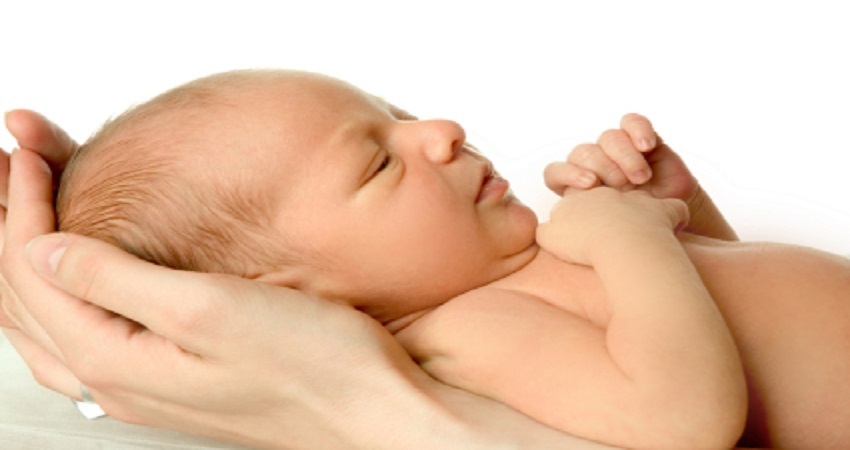Clare Daly's Abortion Bill
- Home
- Information
- Clare Daly's Abortion Bill
5 things to know about Clare Daly's latest Abortion Bill

2. Parents need better care not abortion.
3. These are mostly Late-term abortions - A horrific death for the baby.
4. 90% of parents in these situations don't abort, but they are being ignored and silenced.
1. 'Incompatible with life' is not a medical diagnosis - This is abortion for children with disabilities.
She was compatible with life and love, and she was precious. Most people only dream of angels, I held one in my arms
Gemma, mother to Lily Rose
Clodagh Mc Gill lived for 33 days with Edwards Syndrome. Elaine Fagan lived for 25 years with the same condition. Kathleen Rose Harkin has just celebrated her 8th birthday with Trisomy 13. Lilly Ann Behan lived for 6 days with anencephaly.
All of these children had a disability which would have made them a target of Clare Daly's abortion bill.
All these children were described as 'incompatible with life' - but did you know that the phrase is NOT a medical diagnosis. In fact, there is NO condition where a doctor can say with certainty that a baby will not live until birth, no matter how severe the condition.
As we can see, some babies had short lives; others defied the doctor's expectations. But all of their lives had meaning and purpose, and they brought great joy. And they were all alive and kicking in their mother's wombs.
Their parents have powerfully stated that their children had a right to life: and that right should not be taken away because they had a severe disability.
2. Parents need better care not abortion.
They told me she wouldn't live after birth: She did, for six days. When they told me she wouldn't live after birth: She did, for six days. When you're told you'll get nothing to get six days is a miracle. I am so proud of her that she lived for six days.
Aileen, mother to Lilly Ann
This is a heartbreaking time for parents. It's devastating to hear that your much-loved unborn baby is sick, and may not live for long after birth.
But parents say that the time they have with their babies is hugely rewarding - and crucially important for healing. They get to take photos, make memories, hold their children in their arms, to say hello before they say goodbye. Every minute of their baby's life is filled with love.
Parents are asking the government to make better care available for families who face this devastating news. It's called perinatal hospice care, and its not expensive. It means that parents always see the same team, that they have a special room available after their baby is born, that photographers and bereavement counsellors are available to them.
In other countries, even where abortion was available, when better care was made available, up to 85% of families continued with the pregnancy.
3. These are mostly Late-term abortions - A horrific death for the baby.
I couldn't o that to my baby, I couldn't have aborted my son. He was my child and I loved him. I always will
Fiona, mother to Andrew
When Clare Daly and others talk about 'terminations' in these cases, they are actually talking about late-term abortions, usually after 20 weeks. In Britain, these abortions are legal right up until birth.
There are two chief methods of aborting babies then in these situations:
Giving the baby a lethal injection straight into the heart
Removing the baby piece by piece from the womb
Either method is horrific, and in stark contrast to the beautiful care provided by perinatal hospice services, which respect both baby and family. Studies have also shown that substantial numbers of women who undergo abortion in these circumstances suffer post-traumatic stress. (Korenromp et al, 2005)
A longitudinal study in 2009 in the Netherlands looked at 147 women who had a termination of pregnancy for anomalies and reviewed psychological outcomes at 4,8, & 16 months. At 4 months 46% women revealed pathological levels of post traumatic stress symptoms - at 16 months 21% still had symptoms.
4. 90% of parents in these situations don't abort, but they are being ignored and silenced.
All Myla knew was love, surrounded by people who loved her so much... She wanted to meet us and that was the most precious time ever.
Charlene, mother to Myla Faith
Official statistics show that more than 90% of Irish parents DO NOT abort after getting a diagnosis of a life-limiting disorder. But these parents are not being heard.
In fact, these parents are being ignored and their experiences - which can do so much to help other parents now facing these diagnoses - are being shut out by the Irish media. Please READ and SHARE their stories here: www.everylifecounts.ie.
5. Clare Daly is using these sad situations as part of a push for abortion on demand, up to 9 months, paid for by your taxes.
Clare Daly is an avowed abortion campaigner who wants abortion-on-demand legalized in Ireland.
She is using these sad cases - where a baby has a profound disability - to attack the Pro-Life (Eight) Amendment to the Constitution so that she can try to have abortion on demand legalized in Ireland.
That would be abortion on the British model - which sees up to 200,000 aborted every year, and where up to 37% of abortions are repeat abortions.

References
- Wilkinson D, Thiele P, Watkins A, De Crespigny L. Fatally flawed? A review and ethical analysis of lethal congenital malformations. BJOG 2012;119:1302–1308.
- www.perinatalhospice.org Amy Kuebelbeck, A Gift of Time: Continuing Your Pregnancy When Your Baby’s Life Is Expected to Be Brief (Johns Hopkins University Press, 2011)
- D’Almeida et al. 2006. Journal of American Physicians and Surgeons. http://www.jpands.org/vol11no2/calhoun.pdf
- Calhoun BC1, Napolitano P, Terry M, Bussey C, Hoeldtke NJ. Perinatal hospice. Comprehensive care for the family of the fetus with a lethal condition. J Reprod Med. 2003 May;48(5):343-8.
- Jacquier M, Klein A, Boltshauser E. ‘Spontaneous pregnancy outcome after prenatal diagnosis of anencephaly.’ British Journal of Obstetrics and Gynaecology 2006; 113:951–953
- Mitchel L. Zoler, ‘Trisomy 18 survival can exceed 1 year’, OB/GYN News, March 1 2003 Trisomy 13 / Patau Syndrome
- Rasmussen SA1, Wong LY, Yang Q, May KM, Friedman. Pediatrics. Population-based analyses of mortality in trisomy 13 and trisomy 18. 2003 Apr;111(4 Pt 1):777-84.JM. http://www.ncbi.nlm.nih.gov/pubmed/12671111Wu J, Springett A, Morris JK. 2013. Survival of trisomy 18 (Edwards syndrome) and trisomy 13 (Patau Syndrome) in England and Wales: 2004–2011. Am J Med Genet Part A 161A:2512–2518. http://www.ncbi.nlm.nih.gov/pubmed/23949924
- Korenromp, Marijke José http://dspace.library.uu.nl/handle/1874/9774Korenromp MJ, Page-Christiaens GCML, van den Bout J, et al. Adjustment to termination of pregnancy for fetal anomaly: a longitudinal study in women at 4, 8, and 16 months. Am J Obstet Gynecol 2009;201:160.e17. http://www.ajog.org/article/S0002-9378%2809%2900393-7/abstract
- Calhoun BC1, Hoeldtke Nathan, Frontiers in Fetal Health
Information
- New must-read book
- Letters Unpublished
- Down Syndrome and Abortion the facts
- Joint Committee on Abortion
- Citizen's Assembly
- Planned Parenthood exposed as selling parts from aborted babies
- Clare Daly's Abortion Bill
- Pregnant? Need help?
- The tragic death of Savita
- 90% don't abort
- A 'fatal' abnormality
- Abortion for mental health
- Committee Hearings: 2013
- Expert Group: 2012
- CAHR: 2001-2007
- Government Reports: 1999-2000
- Medical Council
- Other Offical Reports
- Abortion: The Scientific Truth
- History of pro-life in Ireland and the push for abortion
- The Problem with Facebook's Factchecker
- VIDEO: 5 things they said would not happen
- New must-read book
- Abortion bill 2025